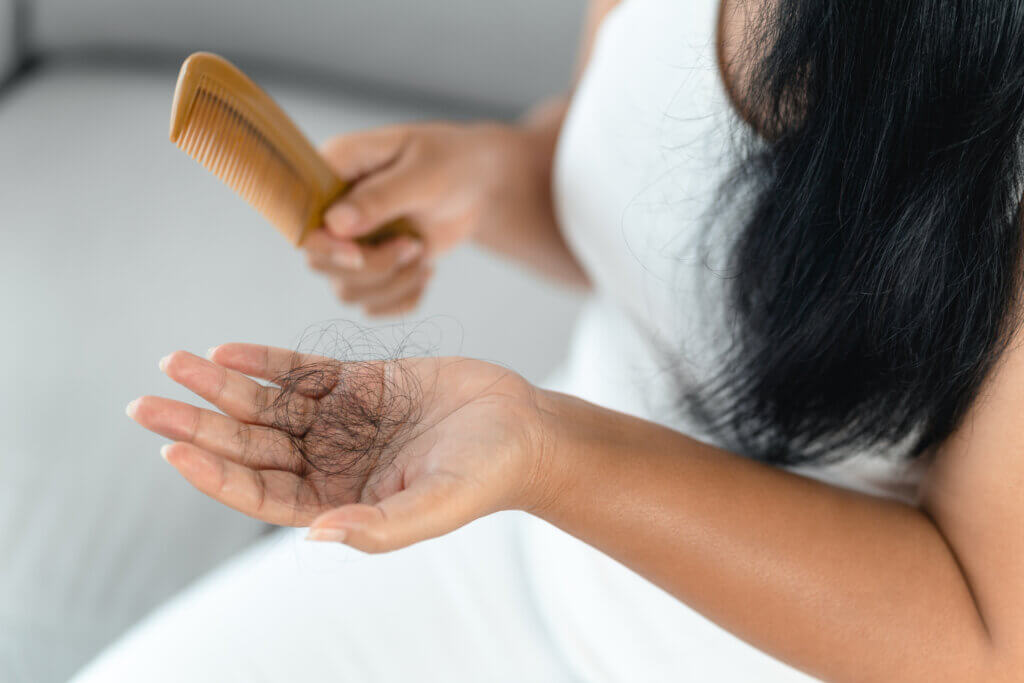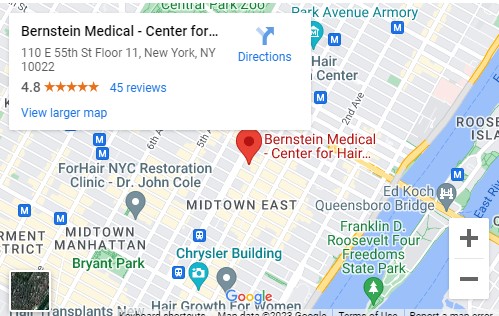When people notice more strands of hair in the shower drain or on their pillow, the first question that often comes to mind is: Am I shedding hair normally, or is this actual hair loss? While the terms may sound interchangeable, hair shedding and hair loss are not the same. Understanding the difference can help you identify whether what you are experiencing is part of the natural hair growth cycle or a potential medical concern that may require treatment.
Understanding the Hair Growth Cycle
To make sense of shedding vs. hair loss, it’s important to understand the normal growth cycle of hair. Each strand of scalp hair goes through four distinct phases:
- Anagen (growth phase): Lasts 2–7 years, during which hair actively grows.
- Catagen (transition phase): A short, 2–3 week period where growth slows and the follicle begins to shrink.
- Telogen (resting phase): Lasts about 3 months. Old hair rests in the follicle while new hair starts forming underneath.
- Exogen (shedding phase): The hair is released from the follicle and eventually falls out, making way for new growth.
On average, it is normal to shed about 100 hairs per day as part of this cycle. This natural shedding is what keeps the cycle going and makes room for healthy regrowth. Problems arise when the balance between growth and shedding is disrupted.
What Is Normal Hair Shedding?
Hair shedding refers to the natural release of hair from the scalp as part of the growth cycle. Everyone experiences shedding. You may notice it when brushing your hair, after washing, or on your pillowcase in the morning.
Shedding can temporarily increase due to several factors, including:
- Stress or illness
- Hormonal changes (such as pregnancy, postpartum, or menopause)
- Seasonal changes
- Significant weight loss or changes in diet
- Certain medications
This condition is often called telogen effluvium. While unsettling, telogen effluvium is typically temporary. Once the underlying trigger resolves, shedding usually returns to normal within several months.
Androgenetic Alopecia
The most common cause of hair loss is androgenetic alopecia. This condition occurs when hair follicles gradually produce thinner, weaker strands instead of healthy, full hairs. Over time, it can lead to visible thinning, receding hairlines, or bald spots. While most common in men, it can also affect women and results from follicle miniaturization rather than a complete stop in growth. Because this type of hair loss does not improve on its own, early evaluation and treatment by a hair restoration specialist is the best way to protect existing hair and encourage regrowth.
Key Differences Between Shedding and Hair Loss
When comparing hair shedding vs. hair loss, the distinctions become clearer:
- Shedding is temporary and part of the natural cycle, while hair loss is usually ongoing and progressive.
- Shedding involves entire hairs that are released at the end of the cycle, whereas hair loss often results in miniaturized, thinner hairs before they stop growing altogether.
- Shedding resolves on its own once stressful triggers are removed, but hair loss requires professional intervention.
If you notice excessive hair on your pillow, in the shower, or when brushing, the first step is to assess whether it falls within normal daily hair fall. If thinning areas or receding patterns are visible, it is more likely to be genetic thinning. Although many other types of hair loss exist and diagnosis by a board-certified dermatologist specialized in hair is recommended.
How Bernstein Medical Diagnoses Hair Concerns
At Bernstein Medical – Center for Hair Restoration, our team carefully evaluates whether patients are experiencing normal shedding, temporary telogen effluvium, androgenetic alopecia, or another type of hair loss. This diagnostic process may include:
- A thorough review of your medical history and lifestyle
- Scalp examination and trichoscopy (magnified analysis of the scalp)
- Blood tests to check for nutritional or hormonal imbalances
- Family history of hair thinning or balding
Accurate diagnosis is essential to tailoring the right treatment plan for your specific condition.
Treatment Options for Hair Loss
If you are experiencing hair loss rather than temporary shedding, Bernstein Medical offers a wide range of advanced treatment options:
- Medications: FDA-approved options such as finasteride and minoxidil help slow progression and stimulate regrowth in people with androgenetic alopecia (genetic hair loss)
- Platelet-Rich Plasma (PRP) therapy: Uses your body’s own growth factors to stimulate dormant follicles.
- Alma TED is a non-invasive, needle-free treatment that uses ultrasound and air pressure to deliver growth factors into the scalp, stimulating follicles and promoting thicker, healthier hair growth without pain or downtime.
- Hair transplant surgery: Bernstein Medical is a pioneer in both Follicular Unit Transplantation (FUT) and Follicular Unit Extraction (FUE) procedures, restoring natural, permanent hair.
Because every case is different, treatment plans are personalized to each patient’s needs and goals.
When to Seek Professional Help
It can be difficult to tell the difference between shedding and hair loss on your own. If you notice:
- Thinning areas on your scalp
- A receding hairline
- Patches of missing hair
- Ongoing hair fall beyond several months
…it’s best to schedule a consultation with a hair restoration specialist. The earlier you begin treatment, the better your chances of preserving and restoring your hair.
Get Started with Hair Restoration at Bernstein Medical
While hair shedding vs. hair loss may sound similar, the difference is significant. Shedding is part of the natural hair cycle and is often temporary, while hair loss is progressive and requires treatment. If you are unsure which you are experiencing, don’t wait until thinning becomes advanced.
At Bernstein Medical, our physicians specialize in diagnosing and treating all forms of hair loss. Whether through medications, PRP, or advanced surgical techniques like FUT and FUE hair transplants, we are committed to helping you restore both your hair and confidence.
Take the first step toward healthier hair by scheduling a consultation today.
Hair Shedding vs. Hair Loss FAQ
How Much Hair Shedding is Normal?
It is normal to shed about 100 hairs per day as part of the natural growth cycle. Anything beyond that amount, especially if accompanied by visible thinning or patches, may indicate hair loss rather than simple shedding.
Does Longer Hair Shed More?
Longer strands are more noticeable when they fall, but the number of hairs shed is not determined by length. People with long hair may feel they are losing more because each strand is more visible, but the daily total typically stays within the normal range.
Can Stress Cause Hair Loss?
Yes, stress can lead to a condition called telogen effluvium, which pushes more hairs into the resting and shedding phase. This type of shedding is usually temporary and often resolves within several months once stress levels improve. Volume often recovers from telogen effluvium on its own after 1 year since the stress has been resolved. However, chronic or severe stress can contribute to longer-term hair loss if left unmanaged.
How Do I Know if It’s Shedding or Hair Loss?
Shedding is temporary and usually resolves on its own, while hair loss tends to be progressive. If you notice thinning areas, a widening part, or a receding hairline, it is more likely that hair loss requires treatment.
Can Diet Affect Hair Shedding?
Yes. Nutritional deficiencies, especially in protein, iron, zinc, and certain vitamins, can increase hair shedding. A balanced diet supports healthy hair growth and can reduce unnecessary shedding.
Is Hair Loss Reversible?
Temporary shedding caused by stress, illness, or hormones often resolves naturally. Permanent hair loss, such as androgenetic alopecia, cannot always be fully reversed but can be treated effectively with medical or surgical solutions, many of which can result in re-thickening of recently thinned hair.






